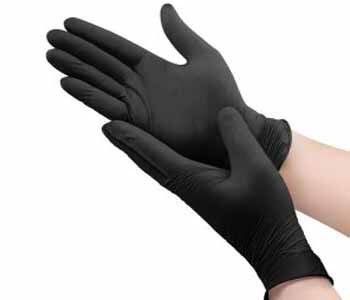This website uses cookies so that we can provide you with the best user experience possible. Cookie information is stored in your browser and performs functions such as recognising you when you return to our website and helping our team to understand which sections of the website you find most interesting and useful.

Vinyl vs Nitrile Gloves – Which Ones To Choose?
Posted on January 1, 2023
When it comes to selecting the right gloves for healthcare professionals, two of the most popular options include vinyl and nitrile gloves. Both types of gloves offer excellent levels of protection against the spread of infection and have their own unique benefits and drawbacks.
In this article, we will compare vinyl and nitrile gloves and help you determine which type of glove is best for your needs.
Vinyl Gloves: Benefits & Drawbacks
Vinyl gloves are continuing to be a top choice for healthcare professionals around the world due to their affordability and effectiveness in reducing the spread of infection.
These gloves, which are made from polyvinyl chloride (PVC), provide medical staff with important protection against hazardous materials, enabling a safe environment for both patients and workers. Not only do vinyl gloves offer an effective barrier against contamination, but they are also comfortable enough for all-day use.
Vinyl gloves are a popular choice and are often a cheaper alternative to nitrile gloves. However, despite their low cost, they don’t offer 100% protection against certain chemicals and hazardous substances (e.g. alcohols, aromatic hydrocarbons, phenols, halogenated solvents, esters, chlorinated solvents, organic acids, etc), making them unsuitable for use in high-risk situations.
Additionally, vinyl gloves are also less durable than nitrile gloves, as they tend to tear more easily when coming into contact with sharp objects.
Nitrile Gloves: Benefits & Drawbacks
Nitrile gloves, on the other hand, are made of synthetic rubber and offer superior strength and durability compared to vinyl gloves. They are also more resistant to chemicals and provide better protection against punctures and tears.
Nitrile gloves also have a lower risk of allergic reactions than latex gloves, making them a good choice for healthcare professionals who are allergic to latex.
In terms of fit and feel, nitrile gloves tend to be more snug and form-fitting, which can provide a better sense of touch and dexterity. However, some people may find nitrile gloves to be more difficult to put on and take off compared to vinyl gloves.
It is important to find the right gloves that provide both comfort and dexterity while avoiding any unnecessary hassle. If you want an improved level of sensitivity without sacrificing quality then nitrile gloves could be the ideal option.
Vinyl vs Nitrile Gloves – How To Choose?
In healthcare, there are numerous scenarios where gloves are necessary for protection, but not all gloves are created equal. When deciding between vinyl and nitrile gloves, professionals need to be aware of the specific use case that is required of them.
For tasks that necessitate frequent glove changes and light protection, purchasing vinyl gloves may prove to be more cost-effective than nitrile. However, if a task involves higher chances of infection or exposure to hazardous materials, nitrile gloves are often a better option as they provide more reliable protective coverage. It’s important to remember to always keep safety top of mind when choosing PPE.
In conclusion, both vinyl and nitrile gloves have their own unique benefits and drawbacks. Healthcare professionals must weigh the pros and cons of each type of glove and consider factors such as cost, durability, and chemical resistance when making their decision. Ultimately, the best type of glove will depend on their specific needs and preferences.
Here at F2 Medical Supplies, we believe that it’s important for our customers to have the best selection of both vinyl and nitrile gloves. No matter which style you prefer, our team is ready to help you get the right glove for whatever you need. Check out our selection of both vinyl and nitrile gloves and order by 4pm for next day delivery!
